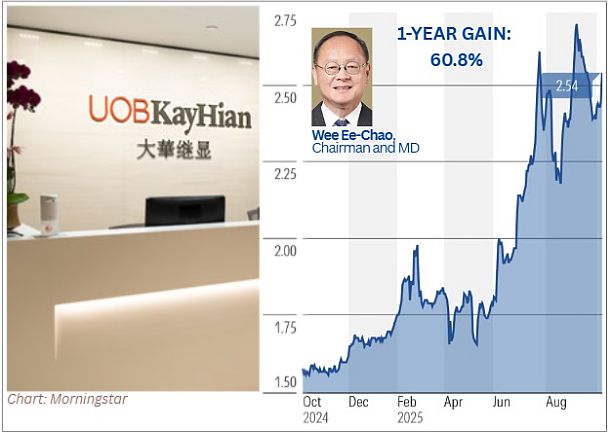| iFast's Oct 7 filing on the SGX website reveals that Fullerton Fund Management has bought iFast shares, crossing the 5% substantial holder threshold. The buying activity was likely funded in part by S$1.1b of the MAS Enhanced Equity Market Development Programme (EQDP). This move led some investors yesterday (8 Oct) to buy a peer, UOB Kay Hian (UOBKH), which offers more attractive risk-reward. UOB KH stock rose 9 cents to close at $2.54.  |
iFast: Growth, But Premium Valuation
iFast currently trades at a lofty 25x price-to-earnings ratio, reflecting bullish expectations around its scalable fintech platform and regional growth drivers.
The group boasts roughly 18% net margin and 25% net cash relative to market capitalization.
However, the dividend yield is just 1%. Here is a comparison of several metrics:
|
Metric |
UOB KH |
iFast |
|
Price-to-Earnings |
~12x |
25x |
|
Dividend Yield |
~5% |
1% |
|
Net Cash vs. Mkt Cap |
~55% |
25% |
|
Net Margin |
~30% |
~18% |
|
Business Nature |
Leading regional broker; traditional, resilient |
Digital wealth mgmt, scalable fintech |
|
Recent Institutional Interest |
Less highlighted recently |
Aggressive Fullerton buying (via S$1.1b MAS EQDP) |
|
Profitability |
High margin, strong cash position |
Growth-focused, relatively moderate margin |
UOB KH: Quality and Value
In contrast, UOB KH (market cap: S$2.47 billion) offers a compelling entry point at just 12x PE — less than half of iFast.
Its dividend yield is a healthy ~5%.
UOBKH holds 55-60% net cash against market cap.
What's more, its net margin approaches 30%, suggesting highly efficient operations and strong profitability.
UOBKH’s growth is supported by expansion into private wealth management and a surge in stock market activities, including new listings and higher trading volumes.
As Singapore’s IPO pipeline revives and wealth management demand expands, UOBKH is primed for further growth.
However, UOB KH's business does face several notable risks, with one of them being its exposure to unpredictable market trading volumes.
Volatile or declining trading activity directly affects brokerage commission income, which can lead to erratic quarterly revenues and sharp drops.
|







